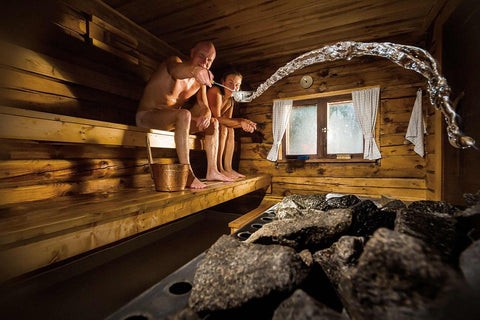More About Traditional Sauna
More About Traditional Sauna
Blog Article
Traditional Sauna Fundamentals Explained
Table of ContentsExamine This Report on Traditional SaunaThe Of Traditional SaunaThe smart Trick of Traditional Sauna That Nobody is Talking AboutNot known Incorrect Statements About Traditional Sauna Little Known Questions About Traditional Sauna.
The majority of the weight lost in a sauna is water loss and is re-gained upon rehydrating. Without a doubt sauna can be a crucial part of a healthy and balanced weight loss program. To take a look at the differences between conventional and IR saunas, I will certainly separate these right into verifiable, academic, and produced differences.Therefore, the hottest point in the saunawhich goes to the ceiling directly over the sauna heateris generally in between 185 and 190 F. Claims that a conventional sauna goes beyond 200 F is just not real and not appropriate for electric saunas offered in the United States. The temperature level for a far-infrared sauna is typically set between 120 and 140 F; nonetheless, unlike the standard sauna, the goal in and IR space is not to accomplish a high temperature.
As a result of this, the temperature level difference is virtually unnecessary, since excessive sweating leads to both sauna kinds, yet the technique of heating up the body is various. In an IR sauna the bather will certainly feel hot and will sweat a lot, yet at much reduced temperature levels (Traditional Sauna). Therefore, if the objective is to spend longer amount of times in the sauna, the IR sauna is an excellent selection
When a conventional sauna has actually been appropriately heated, the sauna walls are warm, the air temperature level has achieved established temperature and the rocks are incredibly warmed. As a fascinating side note, the heated wall surfaces and the rocks are emitting far-infrared warmth, combined with the heated air, to develop an "covering warm".
Some Known Details About Traditional Sauna

When the heat is attained, the elements cycle on and off to preserve the heat. The majority of standard sauna customers take pleasure in putting water over the rocks to create steam to increase sauna moisture degrees. The advantages of putting water over the rocks consist of: making the room extra comfy, moistening the nasal flows, and permitting the usage of aromatherapy by blending essential oils with the water.

When the power gets in the anonymous body, it causes the body temperature to boost and eventually causes perspiration. In web an infrared sauna it is very important for the emitters/heaters to stay on nearly frequently. Considering that there is no mass of rocks to keep warm, the sauna will cool if the emitters turned off.
As pointed out over, the sauna bather in an infrared area intends to position himself in front of running emitters to get maximum benefit from the warmth. The heating time for both areas can be really various, relying on just how the spaces are made use of. For a standard sauna, a bather needs to enable 30-40 minutes for the area to achieve a wanted temperature level and to properly pre-heat the rocks.
Some Known Details About Traditional Sauna
A well constructed sauna will commonly achieve a temperature level of 150-160 F in regarding 30-40 minutes. For hotter temperatures, the space may require to warm for a longer duration.

Standard saunas often tend to be larger (thus use more electrical energy) than infrared saunas, although traditional saunas are absolutely available in one Source and 2 individual sizes too. For a two-person traditional sauna, 5x6 or 5x7 dimension is most prominent. The leading bench can pleasantly seat 2 or 3 individuals and is also long enough to relax during the sauna session.
Everything about Traditional Sauna
The average cost per kWH of power in the united state is around $0.11, so a 4.5 kW heating system will certainly cost around $.50 to run for one hour, if the heating system runs continuously for one hour. Typically a sauna heating unit will certainly run for 75% of the first hour and 50% of succeeding hours on because the aspects cycle once the established temperature is accomplished.

Finally, there is a rarely talked about distinction in the social experience between the 2 spaces. While our society has lost some of the social advantage of the typical sauna experience, it can be extremely socially rewarding (Traditional Sauna). From family time in the sauna, to heart-felt discussions with loved ones, to sauna partiesthe standard sauna experience can lead to intimate mingling
The Basic Principles Of Traditional Sauna
Most greater end infrared spaces include tinted light treatment, audio systems and full-glass fronts.
Report this page